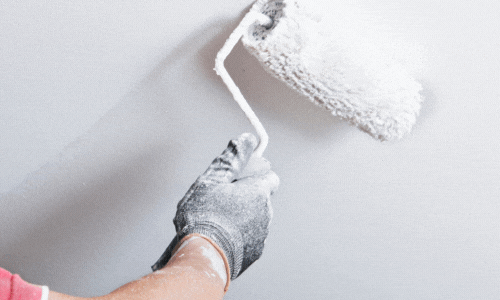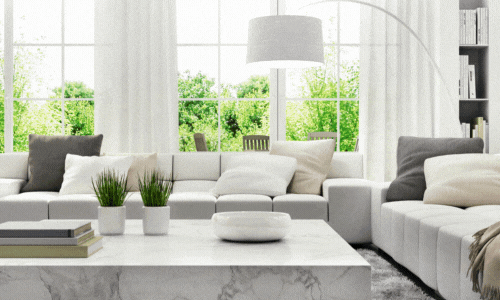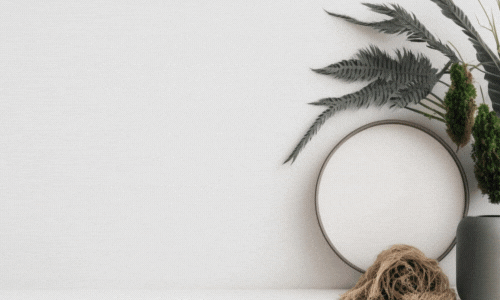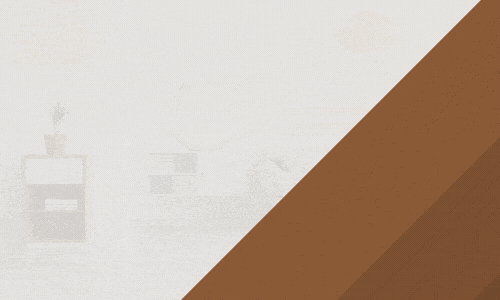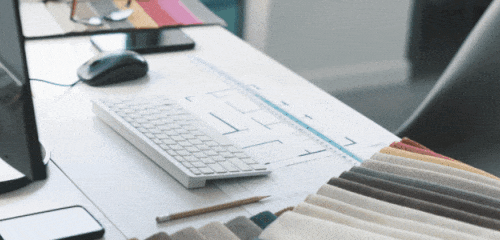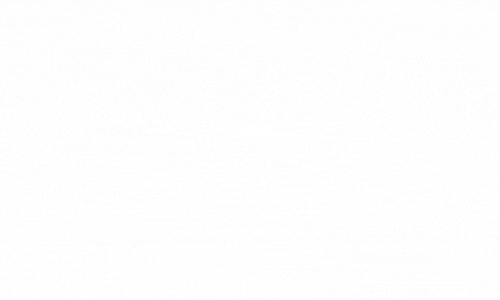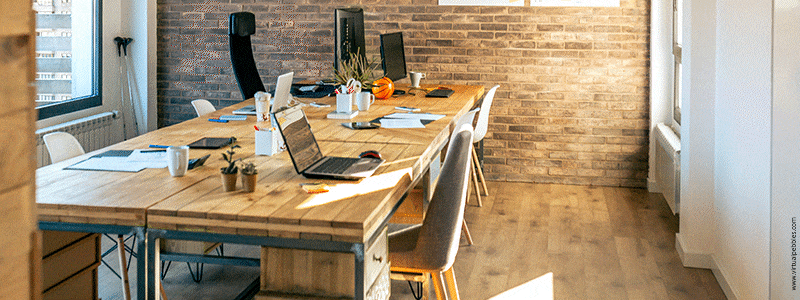
Modern Office Design: Features and Trends
- Blog
- December 28, 2022
What is Modern Office Design?
Artistic works can come from contemporary office design. The era of lifeless, eggshell-coloured walls and cramped cubicle labyrinths illuminated by flickering fluorescent lights is over. Instead, open, bright environments with colourful accents that encourage creativity and lift spirits are the standard in contemporary offices.
Above all things, a modern employee seeks greater freedom in their work environment. I’m sure you’ve experienced this feeling before. Perhaps you spent hours sitting at the same desk, your creativity dwindling and your back beginning to hurt. However, you had to push forward and finish the task at hand. So, you reasoned that a change of scenery—possibly somewhere with more natural light, a few plants, and a comfortable chair—might be beneficial. You regained focus and created the environment you required to do your work in that different setting.
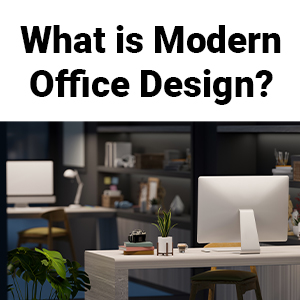
The best office interior designer in Hyderabad has got you covered if you’re interested in the advantages of a modern office design or want to liven up your simple workspace. This article will examine the components of contemporary office design and present the newest styles to motivate you to enhance your office’s interior.
Difference between Modern Office and Traditional Office
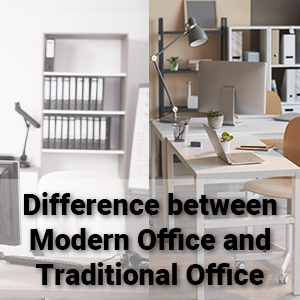
In addition to aesthetics, a modern workplace is frequently defined by the people that work there and the company culture. Regarding the actual workplace space, a modern office will probably have light/white décor, spacious rooms, and minimum furniture – providing a modernistic approach. Modern workplaces are frequently designed in accordance with agency culture to incorporate furnishings or accents that will appeal to employees and enhance their well-being, such as relaxing bean bags, plants, or arcade games. However, when speaking of modern companies or management, this often focuses on making the workplace inspiring for coworkers, aiming for maximum staff retention and satisfaction – while putting people before profit.
A conventional office is likely to have more outdated décor than a modern office, as well as an outdated corporate culture and managerial approach. A typical office setting may not have cutting-edge furnishings but may have private cubicles dispersed across the area, fostering a more independent and conventional style of working. For this reason, a traditional office and company will probably offer less flexibility than a modern office, such as not allowing flexible hours or working from home, which may not be the employee’s first port of call while job-hunting.
3 Main Benefits of Modern Office Designs
Employee Health
The health of your staff is literally being harmed by poor office design. According to research, employees who have autonomy report lower stress levels and higher levels of pleasure. Give them a variety of places to work so they may select the setting and style that works best for them. A recent workplace survey was conducted to investigate workplace design’s effects on corporate success, employee engagement, and innovation. CHOICE was one of the key results across over 11 industries. How does that relate, then? They will feel more in control and less anxious if you respect them, give them options, and listen to them. Health problems decrease as stress decreases.
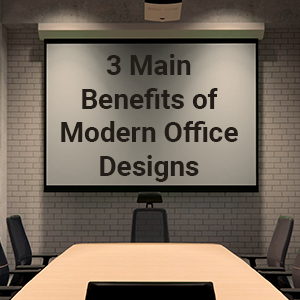
Future-proof Your Workspace
Making your workspace future-proof not only improves its appeal as a place to work but also helps your business generate significant long-term financial savings. The most successful businesses understand how crucial it is to draw in top people. Because of their flexibility and agility, modular offices are significantly simpler to alter as trends shift. Instead of making drastic modifications that necessitate huge costs and time-consuming delays, little improvements can be made gradually over time.
Increase Employee Focus and Attract Top Talent
We could provide case study after case study demonstrating the productivity-enhancing effects of contemporary office design trends. To increase employee focus, more businesses should concentrate on enhancing their workspaces. This will not only raise your revenue but also make your office a happier one overall. In a market where jobs are scarce, these kinds of significant shifts are addressed. Before you realise it, your business will bring in top talent, expand in novel ways, and continuously enhance its culture.
5 Trends in Modern Office Designs
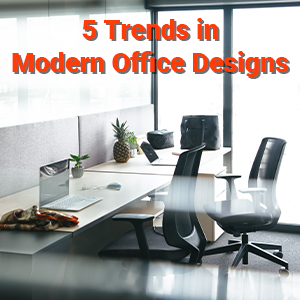
Ergonomic and active furniture
It can be really distracting if you’ve ever had to sit on uncomfortable and old office furniture. Being productive is difficult when your back and hips are hurting. Studies have demonstrated that workplace ergonomics can raise productivity and employee engagement. Yet another benefit of ergonomics is that it shortens recovery times from musculoskeletal conditions, including carpal tunnel syndrome, stiff necks, and repetitive strain injuries. This is a major reason why contemporary workplace designers advocate for dynamic and ergonomic furniture like:
- Workstations with adjustable height
- Sit-stand desks
- Swivel chairs
- Cycle chairs
- Carpets for standing
- Stand-up desks
- Furthermore, treadmill workstations
Giving workers a variety of ergonomic work surfaces and seating options is a prime illustration of modern office design in action. It demonstrates that modern design is about aesthetics and also a method supported by science to improve worker wellness.
Integrated technology
Not only is it practical, but the seamless integration of technology into every square inch of the modern working environment is also essential. Smartboards, wireless phone chargers, and electrical outlets installed in each workstation and conference room are just a few of the small conveniences that make working in an office more bearable. As remote and flexible workspace choices become more popular, more businesses are starting to see how technology enhances the workplace and adopt modern office architecture.
Biophilic designs
The office design community is seeing a strong trend called “biophilic design” emerge. The premise behind the biophilic design is that people have grown too cut off from nature. Our eyes are drawn to the blue light from digital devices rather than embracing the vast blue sky above, and as a result, we live in concrete jungles rather than actual ones. In essence, contemporary living has severely harmed our connection to the natural world. Because of this, we’re more agitated, depressed, and unwell than ever. By incorporating natural features into the design of office buildings, the biophilic design aims to bring a little bit of nature into our daily life.
Rec rooms and lounge spaces
Goodbye to boring break areas and hello to playing foosball with coworkers at lunch or taking a rest on a big, comfortable couch. Now, lounge areas and recreation areas can seem ineffective—after all, work is for working. But one of the cornerstones of contemporary workplace design is achieving that cosy feeling, and employees love it. What better way to boost morale and let some tension out in the recreation area than relaxing with a game of air hockey? Additionally, places like this are sure to impress customers and draw in future employees.
Hot-desking
In a workplace, hot desking is the epitome of mobility. Most employees who use hot desks need a fixed workstation. Instead, employees can choose from a variety of workstations based on their needs. For instance, teams will use a meeting space if they need to collaborate. There are quiet areas for pondering if a worker needs to focus. Hot desking is going nowhere because modern workers need mobility, which improves cooperation.
Additionally, hot-desking offers certain sanitary benefits as well. We’ll undoubtedly observe more serious cleaning considerations in the upcoming post-Covid environment. The majority of decks are crowded with personal belongings or paperwork belonging to a worker, making it challenging for cleaners to cleanse the space adequately.
